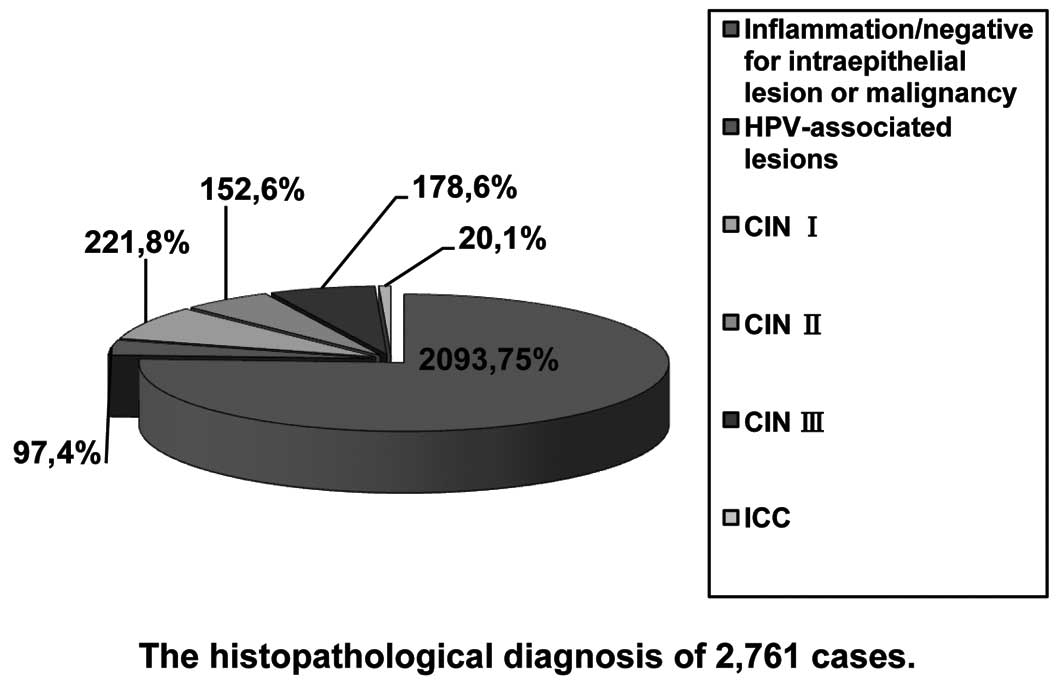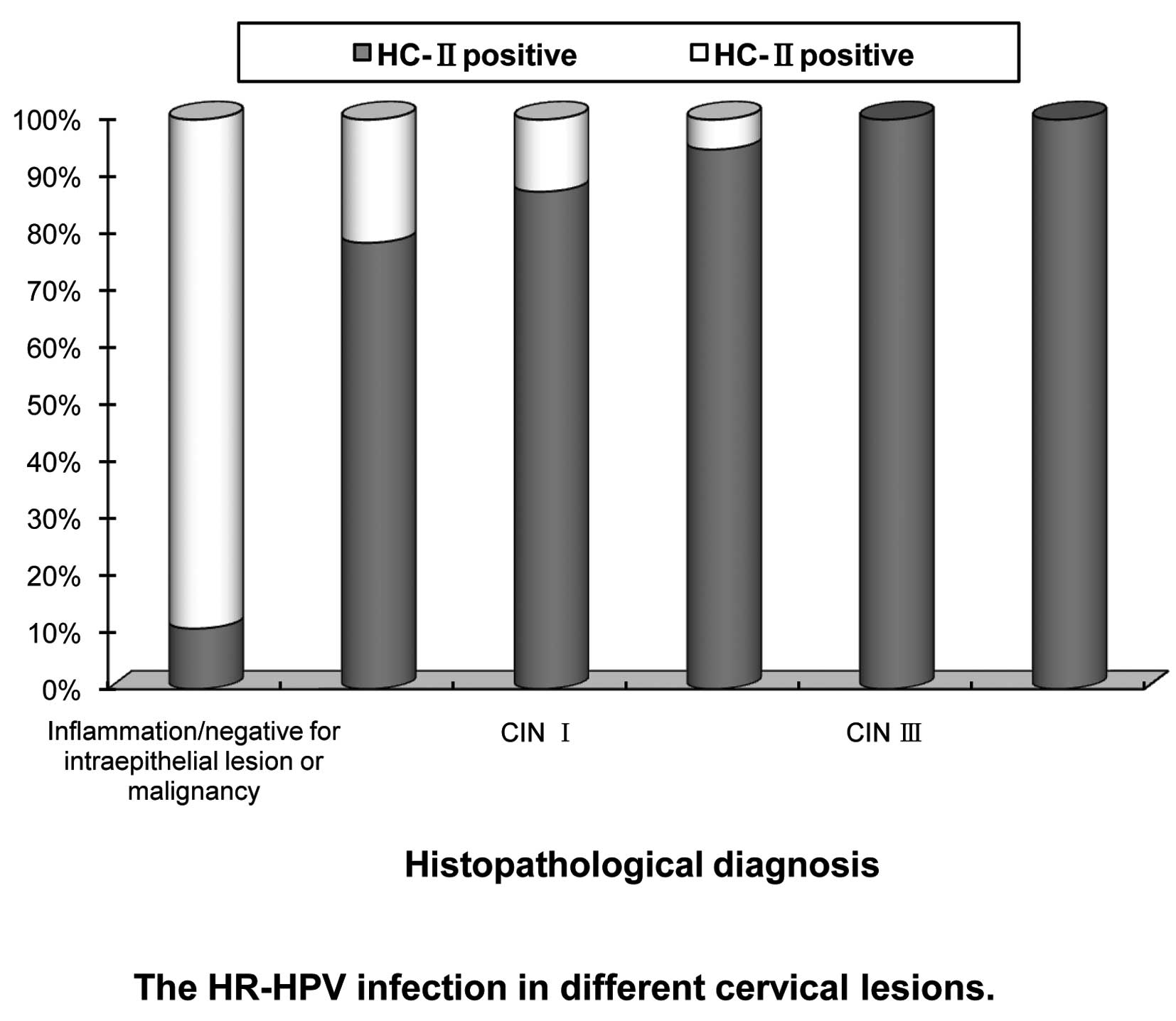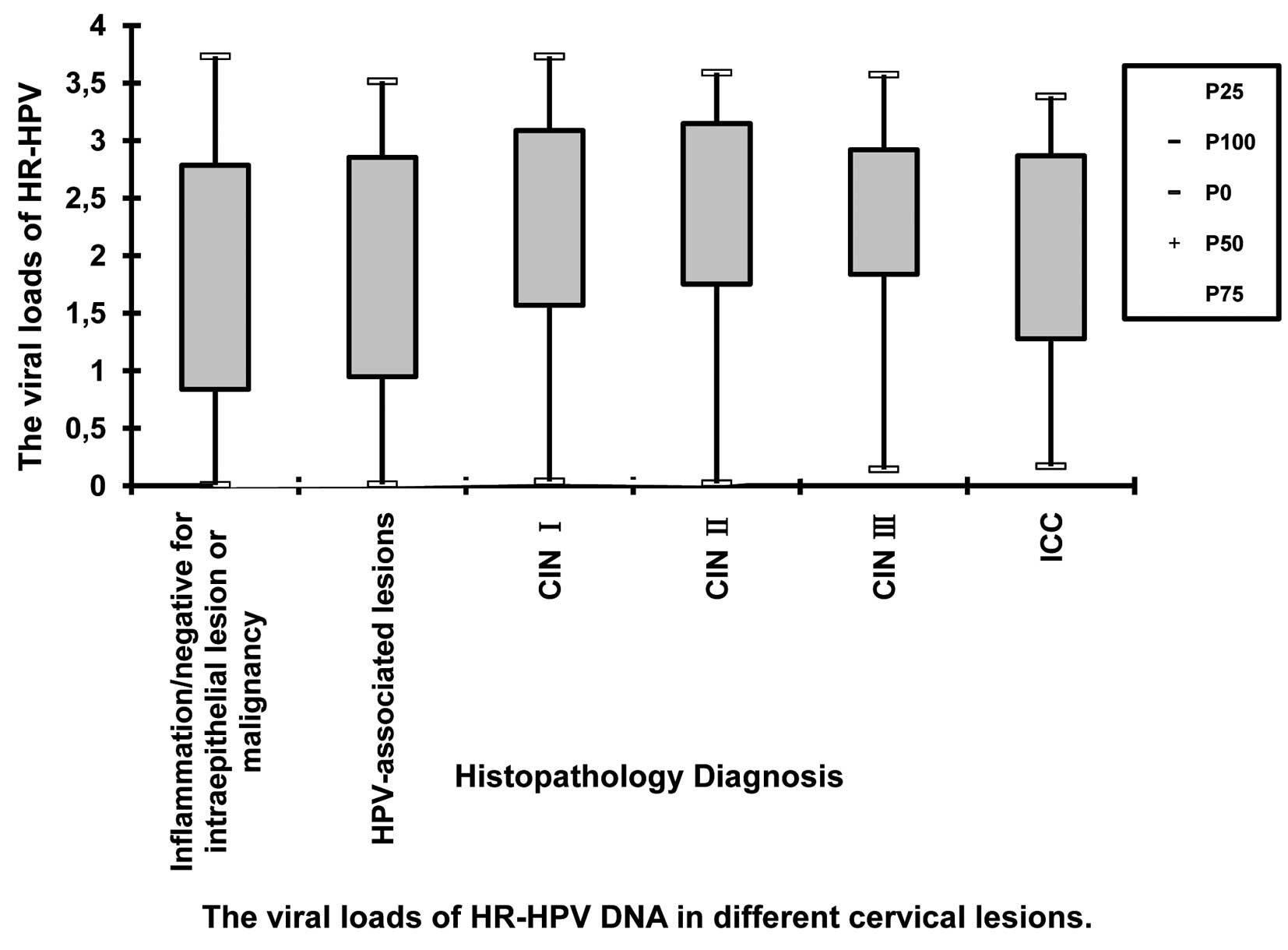Hybrid capture II for high-risk human papillomavirus DNA testing to detect cervical precancerous lesions: A qualitative and quantitative study
- Authors:
- Published online on: January 1, 2010 https://doi.org/10.3892/etm_00000031
- Pages: 193-198
Metrics: Total
Views: 0 (Spandidos Publications: | PMC Statistics: )
Total PDF Downloads: 0 (Spandidos Publications: | PMC Statistics: )
Abstract
Hybrid capture II (HC-II) is the only technique that can be used in clinical human papillomavirus (HPV) DNA detection. However, there is controversy in regards to how to analyze and assess the viral load of high-risk (HR)-HPV by use of HC-II and the relation between viral load and cervical lesions. In this study, we analyzed the results of a sequential screening of outpatients at the Department of Obstetrics and Gynecology of the China-Japan Friendship Hospital, and we aimed to explore the relationship between HR-HPV viral load and the severity of cervical lesions, and to clarify the clinical significance of the titer of HR-HPV DNA determined by HC-II. Using HC-II, 2,761 women were screened for HR-HPV DNA combined with cytological testing using liquid-based cytology. All women with HR-HPV-positive results or abnormalities in cytology underwent a cervical biopsy through colposcopy. Cervical biopsies were taken in 1,051 women. The HR-HPV infection rate was 78.35% (76/97) in HPV-associated lesions, 87.33% (193/221) in cervical intraepithelial neoplasia (CIN) I, 94.74% (144/152) in CIN II, 100% (178/178) in CIN III and 100% (20/20) in invasive cervical cancer (ICC), respectively (P<0.05). Based on the criteria of histopathology, the sensitivity of HR-HPV DNA testing by HC-II for detecting high-grade cervical lesions was 97.71%, the specificity was 79.64%, the positive-predictive value was 41.06% and the negative-predictive value was 99.59%. The viral loads of HR-HPV DNA were 512.15±764.19 in HPV-associated lesions, 753.95±978.27 in CIN I, 871.08±1003.52 in CIN II, 603.40±740.25 in CIN III and 466.44±673.05 in ICC, respectively. In conclusion, the positive rate of HR-HPV increased significantly in accordance with the severity of cervical lesions. The viral loads of cervical inflammatory lesions were markedly lower than CINs and ICC. The viral loads of HR-HPV DNA tested by HC-II had no correlation with the grade of cervical lesions.












